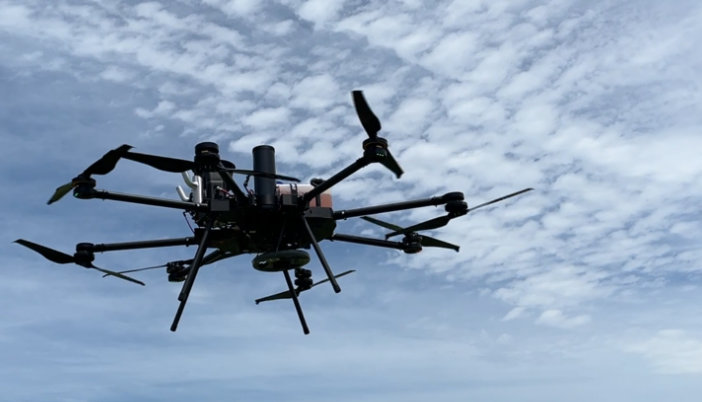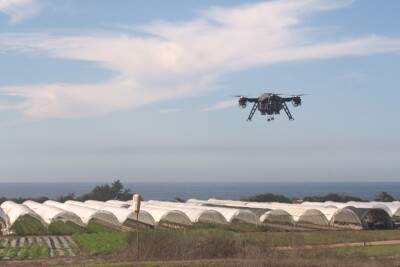Following up our first two parts of the powering options three-part series, we are now shifting our focus from Electric Options and New Fuels to Hybrid solutions.
While electric motors provide advantages such as instant delivery of strong torque, excellent response, and highly controllable power, they do not provide a full day’s worth of flying without, or even with, only a few, battery swaps. To increase flight time and range, battery capacity also needs to increase, but bigger batteries mean heavier drones. So, how can we solve this dilemma?
Several companies have thought about it and have come to a solution: combining electric power options with other systems, such as an Internal Combustion Engine (ICE). This allows the drone’s power system to work with the ICE to provide electrical power to the aircraft when necessary. That way, companies can optimize engine size while using the battery for range extension, emergency landing, or power assist on takeoff.
Some of the companies currently developing solutions of this kind are listed below. Keep in mind that these represent a small portion of the market only.
UAVHE
Since gasoline has 50 times the energy density of batteries, but electric motors are indispensable for maneuvering, UAVHE focuses on hybrids to utilize the strengths of both electric and combustion technologies. Specifically focused on the development of engines to power commercial drones, the company already has several ready models to create custom modifications to meet any requirements.
Ranging from 11 lb. to 52 lb., UAVHE claims its drone hybrid power units ensure greater endurance over purely electric motors with the same take-off weight, longer flight time, and easier flight controls due to their lighter weight.
Innoflight International
Compared to conventional carburetor-based engines, Innoflight’s Electronic Fuel Injection-powered engines (EFI) consume a significantly lower amount of fuel, offering up to 65% better fuel efficiency. This translates to increased performance and reliability, reduced operating costs, extended flight times, and a lighter environmental footprint.
The system uses advanced air density and barometric pressure sensors to fine-tune an engine’s fuel mixture with precision, allowing it to calculate fuel-to-air mapping and generate optimum engine performance automatically adjusting for all altitudes.
Provided as a turn-key solution with optional alternators, starter-alternators, and generator integrations, the technology is ready for commercial and DoD applications. Additionally, it seamlessly integrates with flight control systems via Serial TTL, PWM, or S.Bus, enabling comprehensive engine and alternator control as well as real-time telemetry data collection.
Skyfront
Using a proprietary fuel-injected hybrid-electric two-stroke internal combustion engine to convert gasoline/petrol into electricity in flight, Skyfront claims to have built a 5+-hour-flight-time drone. While carrying a maximum of 22 lb., the drone can fly for 1 hour, or 3 hours with an 11 lb. payload.
Ready for surveying and mapping, agriculture, mining, and military and defense, Skyfront provides customization services to adapt its hybrid drone to any mission a company needs. From software to hardware, “each member of the Skyfront team has years of experience building systems from the ground up.”
Yamaha Motor
Having been operating precision agriculture remotely piloted helicopters commercially since 1991, Yamaha has the customer support network for real-world operations, as well as the knowledge and know-how for operating unmanned aircraft and building the requisite aircraft servicing scheme. Also, as a company with a wealth of technologies for and products using gasoline engines and electric motors alike, Yamaha decided to develop a hybrid drone engine.
According to the company, using a gasoline engine to generate electricity enables it to run at an rpm range for maximum combustion efficiency, thereby compounding the effects of gasoline’s higher energy intensity and the improved fuel mileage to create a power source more efficient than a battery. By making an engine the power source instead of a battery, Yamaha wants to relieve pilots from battery replacing and charging tasks that happen every 20-30 minutes and allow drones to fly for a maximum of 3.5 hours.
H3 Dynamics
With a focus on weight reduction and simplicity, H3 Dynamics’ hydrogen-electric UAS AEROSTAK range comprises super lightweight hydrogen fuel cell systems, from 250W to 6kW nominal power. These include a special-grade PEM fuel cell stack, control electronics, lightweight casings with integrated air-cooling fans, and a hybrid LiPo-compatible hybrid electronic board.
H3 Dynamics manufactured a hydrogen multi-rotor drone, Hycopter, to make large-scale inspections easier and faster when compared to conventional battery UAVs. It equips an AEROSTAK 2000 fuel cell and an emergency battery backup on board as a failsafe, enabling the drone to fly for up to 3.5 hours. The company also developed a hydrogen refueling station, H2FIELD-1, to produce hydrogen from water, refilling a 9L-350 bar cylinder in under 2.5 hours.















Comments